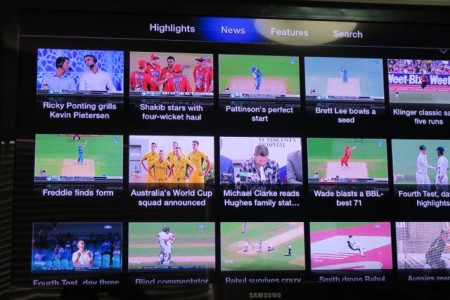How connected TV is forcing Australian brands to be more social
It’s no secret that over the last few years, the growth of connected TV, internet TV and video on demand (VoD) has led to a decrease in real-time TV viewing.
There are now more than half a billion connected TV devices in use around the world. In the UK alone, connected Sky+ homes watch 33% more catch up TV and x3 more VoD than the unconnected Sky+ homes. In short, brands can no longer rely on live TV advertising to reach their mass audience.

Conversely, in Australia, real time TV still remains very popular, and sadly Netflix has yet to reach our shores (at least for those waiting diligently to obtain it legally). Not maybe not for long. A few weeks back, Cricket Australia launched an Apple TV channel, giving fans access to extra content and information beyond the live matches. It is the first Australian sport to launch on the platform, following suit from the US, which has already launched similar channels for the NBA and NFL.
In a similar announcement, Mamamia Women’s Network is soon to launch Mamamia TV. For those outside of Australia, Mamamia began as an independent Australian Mummy Blog and became a runaway social success story appealing to a high number of Aussie women aged 25-45. It also seen as a credible online venue for brands to activate campaigns and connect with their female target audience. An interesting development indeed.
According to their editor-in-chief, Jamila Rizvi, the aim of Mamamia TV is to produce snackable TV-style content for the web. Rizvi claims that, unlike other media companies, Mamamia isn’t having to shift to understand digital or what women want out of content, as their success is down to their online following in the first place. She said the extension of the platform to TV is due to increased demand for their content as they now receive over 420,000 views a day on their site, compared to 20,000 views, 2 years ago.
On a larger scale, Vice TV is also making a splash globally and showing how brands that are willing to be reactive and involve themselves in topical news are met with likes, shares and mentions of their content across the web.
This surge in connected TV usage, combined with the relatively low cost nature of online content production, suggests 2015 will see a sharp change in the way brands create and distribute their content. In many ways, this is the native advertising model for Internet TV – partnering with like-minded publishers to co-create content and in turn build trust and engagement with would-be customers.
In Australia, where the general population is often segmented and hard to reach en masse beyond traditional TV, Mamamia TV and Cricket Australia will offer brands that do not have huge mainstream media or creative budgets, a cost effective way of reaching their audience in a relevant and credible manner.
Conversely, brands that cling to traditional TV advertising may find that while they can still achieve mass reach, their message has little social resonance when compared to brands that are early to adopt and integrate with the bite sized, reactive and topical content publishers like Mamamia and Vice create.